#ECOLOGY
Explore tagged Tumblr posts
Text
The difference = sentient (self aware/ intelligent) and sapient (human like) (cause you know homo sapien).
Most animals (especially other mammals) have been recorded to show various degrees of sentience (crows checking other dead crows).
i am on my knees tears running down my face knuckles raw and bleeding and BEGGING people to learn the difference between sentient and sapient
15K notes
·
View notes
Text
It may seem unthinkable to us today, but once it was normal for the response to hearing a species was in danger of extinction to be "Let's go shoot a few before they're all gone!" This wasn't just among trophy hunters and wealthy collectors who felt entitled to acquire any species they wanted regardless of the impact, but biologists, museum curators, and other naturalists of varying sorts. Today conservationists and scientists have a much more enlightened and informed view of how to respond to a species' impending extinction, but this attitude has been hard-won over the past century.
Arthur Augustus Allen may not be as well-known as John James Audubon, but this ornithologist was incredibly instrumental in getting people to stop shooting rare birds with guns--and shoot them with cameras instead. As chairman of the American Ornithological Union's Committee on Bird Protection, he used his role to establish ethical resolutions that prohibited the taking of rare birds from the wild (in violation of the Migratory Bird Treaty Act, no less) and emphasized the observation of live birds in the wild over killing more for preservation and study.
We would do well to emulate Allen's example. Today there are still greedy people who look at a forest and only see dollar signs, or whose only interest in an open area of wilderness is the mineral rights under the soil. They see a pair of antlers as a trophy (and leave the meat to rot), and consider any inconvenient animal like a gray wolf or prairie dog only fit to exterminate. Yet Allen is a symbol of resistance against the purely acquisitive, extractive approach to nature, and how education can change minds and hearts.
So to those of you working to inform the general public about the value of nature in its own right, and not just for what we can get out of it--keep up the great work! Arthur A. Allen certainly wasn't the only person who worked to get the word out about the need to protect dwindling species and their habitats, but I think his efforts deserve to be added to more popular knowledge of conservation.
#birds#birding#ornithology#conservation#environment#nature#wildlife#animals#ecology#science#scicomm#endangered species#extinction#animal welfare
144 notes
·
View notes
Text







Lecanora horiza
There are approximately a gazillion species of Lecanora that look just like this one--grayish-yellow crustose thallus, brown apothecial discs surrounded by prominent margins, growing on the bark of deciduous trees. So to figure out if you are looking at L. horiza or one of its many look-alikes, you gotta go . . . deeper. This lichen is characterized by its crystalline thalline margin and smaller spores, features you can only observe in an apothecial cross-section under the microscope. It can be found in North America, Africa, and Europe, though its range might be largely overlooked due to its inconspicuous appearance.
images: source | source
info: source | source
#lichen#lichens#lichenology#lichenologist#mycology#ecology#biology#fungi#nature#fungus#symbiosis#symbiotic organisms#trypo#trypophobia#I'm lichen it#lichen a day#daily lichen post#lichen subscribe#life science#environmental science#natural science#Lecanora horiza#Lecanora
95 notes
·
View notes
Text
A team of marine biologists from Norway, the U.S. and Denmark has conducted the first hearing test of a live baleen whale. For their study published in the journal Science, the group corralled a pair of wild minke whales and recorded their brain waves. Concerned about how human-produced ocean noises may impact the creatures that live in the sea, marine scientists want to learn more about the animals' hearing capabilities. In this new study, the research team devised a means for testing the hearing of two wild baleen whales by recording their brain waves as they listened to recorded sounds.
Continue Reading.
59 notes
·
View notes
Photo
[id: tweet by @/nypost Post “Coca-Cola is the world's largest plastic polluter for second year” with attached source link and a picture of plastic Coca-Cola bottles wrapped together in plastic film. reply tweet by @/HazelMonforton reads, “oh you mean banning straws and getting mad about inhalers didn't help”./end id]

90K notes
·
View notes
Text
One of the big changes in how I think about plastic waste in the last like 8 years is ranking good quality waste disposal far higher than recycling quality. Like it's moderately good that my hot water is from plastics incineration. The carbon emissions are bad but if you're worried about free plastics in the environment a modern incineration plant is a pretty good compromise. Landfills are also good.
30 notes
·
View notes
Text
One thing that I've noticed while hiking in different environments is that regions that were heavily deforested over 100s of years become rife with invasive species. Cutting down the tree canopy allows fast-growing invasive plants and trees to take over entire areas, preventing light from reaching slower growing native trees and shrubs. Old growth forests that grow in remote areas that couldn't be deforested due to mountainous terrain have more native species. I've hiked in sections of the Italian Alps or Northern Appalachian mountains in Maine and you see mostly native plants in these higher altitude regions. Contrast that with the farmlands surrounding Veneto in Italy, or the Netherlands or Germany, or deforested and reforested former farmlands in Connecticut and Maine, for example, up to 80% of the plant species are non-native, invasive species like Japanese Knotweed, Garlic Mustard, Mugwort, Tree of heaven, Privet, Winged Euonymus, Porcelain berry, Kudzu, Rosa multiflora, and so many more.
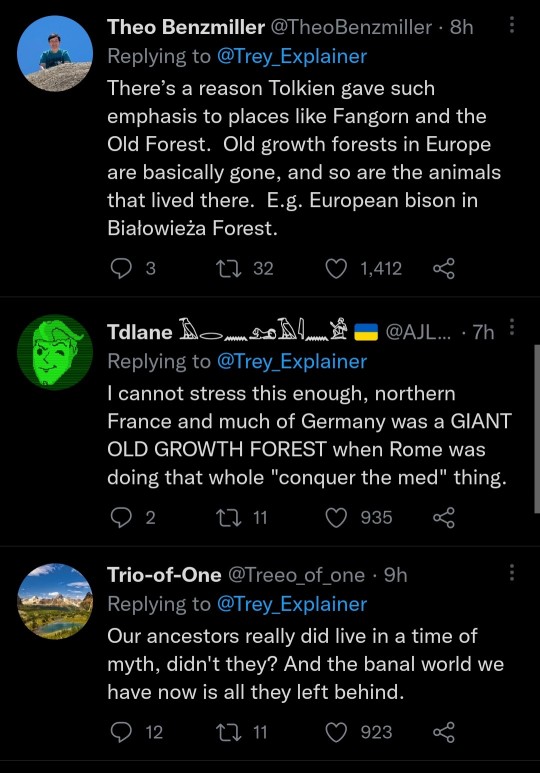
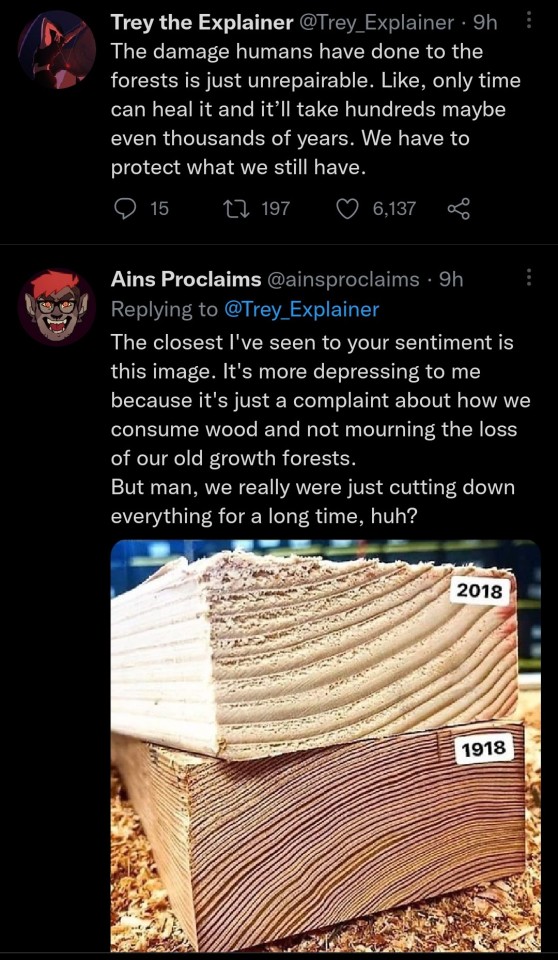
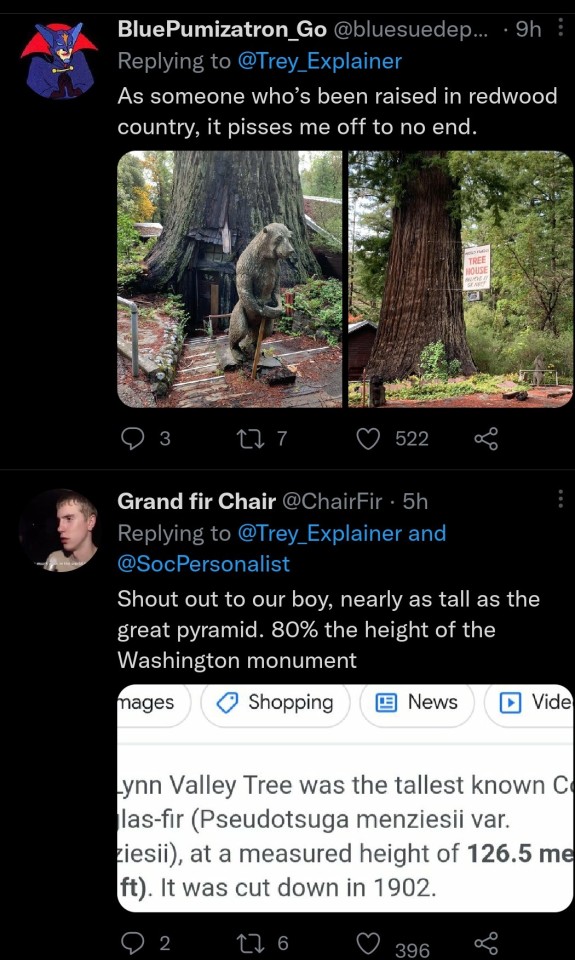
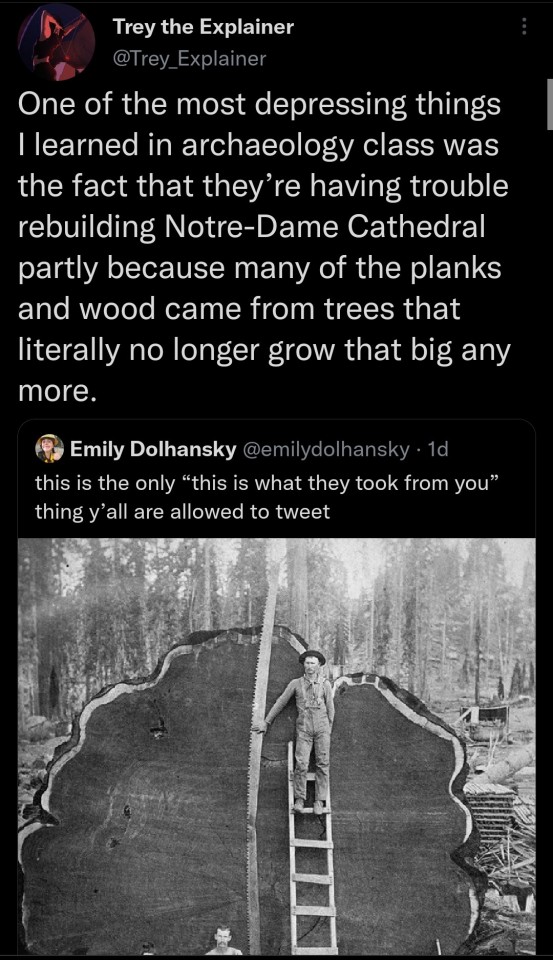
#trees#old growth forest#old growth trees#forests#history#deforestation#environment#ecology#saplings#nature#invasive species#invasive plants#native plants
78K notes
·
View notes
Text
Jenny Odell: I sometimes feel that in an individualistic culture, people get freaked out by the idea of being tied down or responsible for anything. Thinking about a gift economy, they might say, “I want the gift part but not the accountability part.” Lately, I’ve been volunteering in this native plant restoration group, and one of the most surprising parts has been how enlivening it is to help keep something else alive (I’ve never had a garden before). Sometimes I truly can’t tell whether I’m giving or getting. What are some ways that you see participation in a gift economy changing the participant’s sense of herself and her place in a network? In other words, is participation itself part of the gift?
RK: Yes. Exactly. Participation is part of the gift, where giving and getting meld into one another. A garden teaches you that every day. Gifts and responsibilities are always coupled to each other.
Of course, you’re right that given our hyper-individualistic culture, many people are not eager to embrace responsibility. Its often confounded, I think with the notion of “obligation”. Obligation feels to me like an involuntary demand on our time and energy, imposed from outside without the assurance that you’ll benefit in return. I’m sometimes reluctant about that, too. But, responsibility is an invitation to respond to need, an opening to reciprocity in which the benefits flow both ways. The benefits of participation in a gift economy are not only flowing to the gift recipient but the giver as well. Working on your restoration project, or any other gift exchange strengthens your own sense of agency, doesn’t it? It awakens care and compassion, builds relationship and nurtures your own identity as a person of capacity, of having enough abundance in your life that you can share it. I think it contributes to a sense of purpose, which we know is good medicine. It reminds you that you matter, that you’re part of something. That’s a big reward.
I find that some of the times that I feel most fully alive are in experiences of shared physical work in community with others. Like an old-time husking bee or shared planting. We’ve lost so many of the opportunities for that and gift economies provide the opportunity to work in common, to satisfy the need for belonging. And when that work is on the land and the benefits flow into our neighborhood of many species, the benefits are multiplied beyond the boundaries of ourselves.
JO: There is a really beautiful analogy you draw between the economy of nature and the human gift economy. Asking what in the gift economy functions as the “sun”–the constantly replenishing source of energy–you speculate: “Maybe it is love.” Reading this, it occurred to me how love is in essence a surplus, the force that gets things going. Could you speak more to the emotional and practical role that things like love and gratitude play in a gift economy? And how do they change the way we see “resources”?
RK: The fundamental currency of a gift economy, is relationship, not money. I suppose it’s what some people call “social capital”, but I’m not fond of that term. Participation in a gift economy could create a whole continuum of relationships, from the warmth of being cared for or an expanded sense of justice to just plain neighborliness. This can create a sense of security because mutual reliance grows from gift exchange. There is a sense of satisfaction in being able to give, and a sense of kinship in being able to receive, when we share the mutual acknowledgment of human vulnerability. For me, that continuum of relationships includes the possibility of a currency of love and gratitude that motivates the gift exchange, which is the source of the flow, between people and between people and the earth as well.
Gift-giving is a way of saying “I see you.” I see what you need and I see what I have to share. My well-being is tied to yours and yours to mine. It develops a trust that when I am in need, there will be abundance shared with me. The giver and the recipient are honored at the same time. That seems a lot like love to me.
Robin Wall Kimmerer, interviewed by Jenny Odell, Gift Thinking. [emphasis added]
#this is a fantastic interview im so excited for RWK's new book#robin wall kimmerer#jenny odell#ecology#world healing#readings#mine#words
29 notes
·
View notes
Text

river in mountains. idyllic autumn scenery of carpathian countryside. alpine village. water stream among forest and grassy shore. fence on the river bank. cloudy weather
#river#mountain#forest#landscape#tree#nature#stream#background#grass#scenic#scenery#water#countryside#cloud#autumn#weather#shore#wonderful#carpathian#among#grassy#fence#cloudy#high#field#morning#meadow#sunny#land#ecology
34 notes
·
View notes
Text
I think one of the really interesting parts of designing spaces for shared human use and natural habitat is that nature relies on a certain amount of messiness. A lot of the moths, native bees, and butterflies that people explicitly want to help rely on things like standing leaf litter and rotting wood to complete their lifecycles. A lot of birds need dead and dying trees. And yet in order to really catch on and spread, ecological plantings need to appeal to people and work for their needs as well. Our "for the bees" plantings can't be untidy messes or no one will want them, and yet a lot of insects winter in the dead stems of spent flowers and plants, for example.
It's something I'm relatively new to thinking about, but I think if we envisioned plantings as giant terrariums, we might be getting somewhere. A driftwood branch, a large rock, some moss, some occluded spaces--these are things we consider normal and attractive in, say, our pet turtle's enclosure. I think those things have a place in the "flowerbeds" of suburban houses, as well. Translate that to a fallen tree arfully placed under some small trees or large shrubs, with native ground covers growing around it. A mossy boulder. If you have a stump, you can put a cute toad house on it, maybe seed it with mushroom spores if it's in a sheltered area. Think of it as a careful composition.
And we need to let go of the idea of bare ground in plantings, at least in my part of the world. Xeriscaping is amazing, but something I cannot speak to at all in my (usually) humid biome with (usually) regular rainfall. Here, if you leave ground bare, it will fix that for you. Fighting it by weeding and mulching forever and ever is a loser's game.
Framing matters, too. You can communicate that a planting is cared for with a neat frame--a nice edging, a small area of neatly mown grass. Lawns and landscaping, at least in the US, are a big signifier of status, and a messy yard will be frowned on and may even bring problems with the HOA or the township. Things like a neatly-kept path and an area of well-maintained lawn are great signals that this is actually a deliberate design.
My succulent garden has also taught me that working with small areas at once makes it a lot easier to get a design the way you want it and get things established. That bed is a real joy, where some of my larger efforts are either definitely a work in progress or "what were they even going for here".
Anyway, lots of thoughts to be had.
22 notes
·
View notes
Text
I see this and sure its cool and funny but like, I also think about all the reasons why we don't do it now.
You think this bear learned to be wary of people or do you think poachers waited for it to grow up then shot it as it came up expecting to be fed?
I think of things like that every time I hear a complaint about how someone who lives out in "nowhere" talks about B.L.M. rules about land use and some "fuckin' turtle" they have to protect.
Like yeah... you have to share the planet with other people and other life. I am reminded of the ideology I learned in ag-econ classes in college. "A pig is a way of raising the value of grain". Basically if it takes 15 lbs of grain to make 1 more lbs of pig and por sells for more than 15x a pound of grain then you should maximize the grain to pork conversion. Makes sense very straightforward and it WILL make you money. But it is a very narrow view of life. What is life like for a pig who has a feeding trough on one side and a trough to shit in on the other? What sorts of diseases are we spawning in such places? What is the value of eating animals that are healthy as opposed to horrifyingly obese? What about the ethical and moral demands of taking care of another life form... even one we plan to consume? All of that and more is lost when we simply increase the value of grain.
I see that sort of thinking with the polar bear at the helm of a ship, I see it all the time. I want to live in a society that values the rules that are there to respect and preserve life, complexity and depth.

Polar bear on board a Soviet icebreaker, 1970.
2K notes
·
View notes
Text
new favorite YouTube comment just dropped

#LMAO#wolves#yellowstone#abolish capitalism#guillotine the rich#anticapitalism#leftblr#therian#YouTube#youtube comments#socialism#anarchism#communism#ecology#antiwork#fuck capitalism#eat the rich#babe wake up#all-time hilarity#personal hall of fame
49K notes
·
View notes
Text

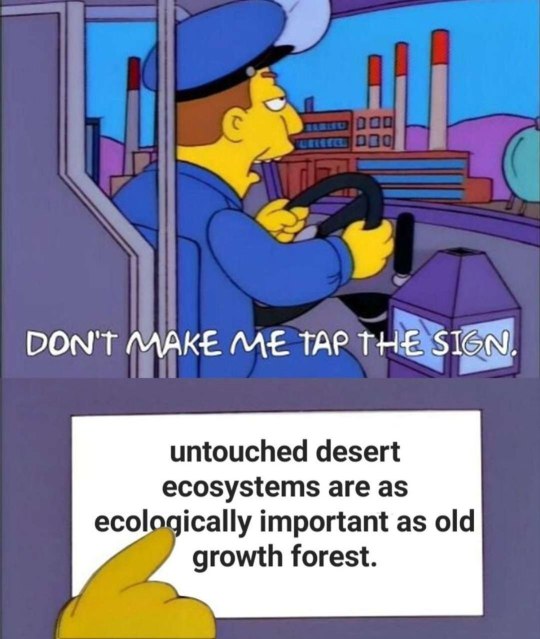
#deserts#desert#ecosystem#earth#ecology#econotego#golf course#golf equipment#golfers#mini golf#golf#ausgov#politas#auspol#tasgov#taspol#australia#fuck neoliberals#neoliberal capitalism#anthony albanese#albanese government#anti capitalism#capitalism#environmental activism#environmental#environment#enviroment art#environmetalists#enviromental#anti capitalist
88K notes
·
View notes
Text
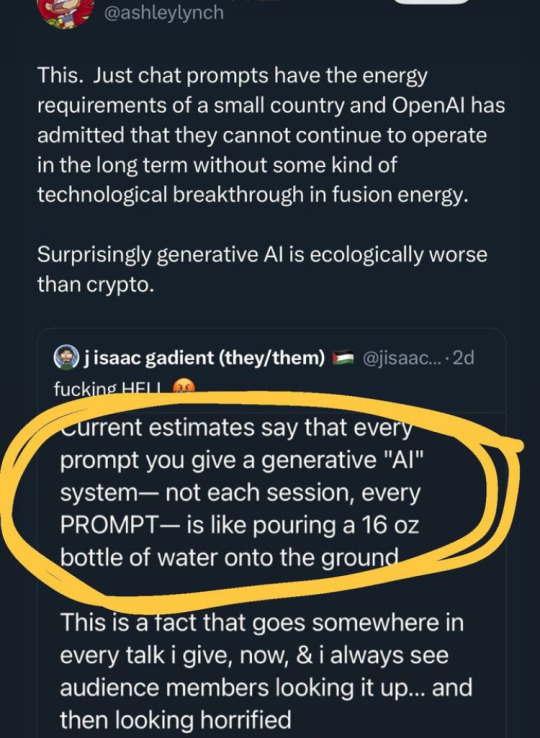
#ai#ai art#climate change#ecology#ecocide#water rights#land back#respect water treaties with First Nations#wasteland#waste#waste fraud and abuse#desertification
63K notes
·
View notes
Text
VERY IMPORTANT a dam in the Netherlands, the weerdsluis lock, is directly on a migratory path for spawning fish. They have a worker stationed there to open the door for the fish, but they can take a while to open it. So to keep the fish from getting preyed on by birds they installed a doorbell. Only, the fish don't have hands to ring the doorbell. If you go to their website, they have a LIVE CAMERA AND A DOORBELL that YOU RING FOR THE FISH when they're waiting, and then the dam worker opens the door for them! I can't express how obsessed I am with this. look at this shit. oh my god.

Please check on the fish doorbell once in a while :)
#self#last night i kept stimming thinking about this LOVE IS AO REAL. AUGH#i dont like damming but this is a step in the right direction AND it gets the public involved#i love that! more public interactions like this in ecology please! thats how you bring change! thats how you make ppl see the beauty in life#marine biology#ecology
63K notes
·
View notes